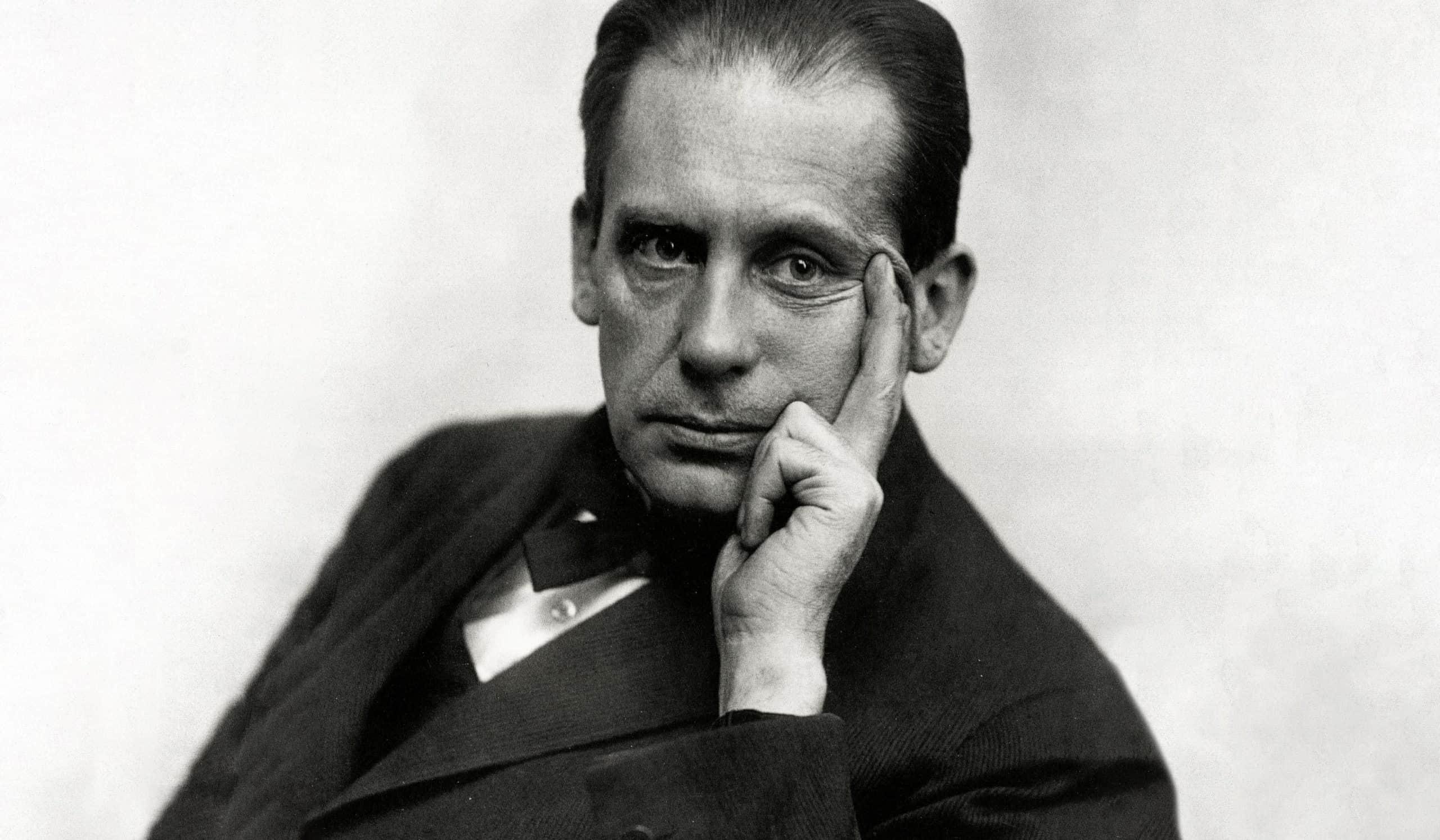Creators
Bauhaus Manifesto: Architectural Design for the Modern Utopia
Ironically, Walter Gropius may not have been the best student. He actually dropped out of college before finishing his degree a few years before founding the most modernist design school of all time.
A year later, in 1908, he went to work in the office of architect Peter Behrens, a founder of the Deutsche Werkbund association. Here, Gropius is colleagues in architectural design with Ludwig Mies van der Rohe, who also joined the studio in 1908, and Le Corbusier, in 1910, shortly before Gropius left to start his own architectural design office.
While serving in the First World War, Gropuis was wounded and earned two Iron Crosses. Yet somehow during the middle of the war, in 1916, he submits a failed proposal to establish “a school that could provide artistic guidance to industry, trade and the crafts”. A few years later in 1919 he became chairman of the Work Council for Art with “the aim is an alliance of the arts under the wing of great architecture.”
The Bauhaus manifesto would be drafted that same year, upon negotiating the merger of the Academy of Fine Arts with the disbanded School of Arts and Crafts, to create the Staatliches Bauhaus.
With the new hope of post-war ultra-democratic structures still running hot, Walter Gropius issued the Bauhaus Manifesto in April 1919, giving birth to a new modern utopia idealism.
Bauhaus is certainly one of the most famous schools of architectural design and art schools of modernity. For the first time he had managed to connect fine art and craftsmanship to design across the disciplines visual and performing arts including architecture, painting, sculpture, film, photography, and more.
Gropius attracted some of the brightest minds of Europe to the Bauhaus. Josef and Anni Albers, Marcel Breuer, Herbert Bayer, Marianne Brandt, Johannes Itten, Wassily Kandinsky, Paul Klee, Oskar Schlemmer, Lothar Schreyer, Gunta Stolzl, László Moholy-Nagy,and Ludwig Mies van der Rohe, among others.
They were all innovative, adventurous, creative, and they presented a new paradigm in art and architecture education.
“Bauhaus Manifesto and Program” (1919)
The ultimate aim of all visual arts is the complete building! To embellish buildings was once the noblest function of the fine arts; they were the indispensable components of great architecture. Today the arts exist in isolation, from which they can be rescued only through the conscious, cooperative effort of all craftsmen. Architects, painters, and sculptors must recognize anew and learn to grasp the composite character of a building both as an entity and in its separate parts. Only then will their work be imbued with the architectonic spirit which it has lost as “salon art.”
The old schools of art were unable to produce this unity; how could they, since art cannot be taught. They must be merged once more with the workshop. The mere drawing and painting world of the pattern designer and the applied artist must become a world that builds again. When young people who take a joy in artistic creation once more begin their life’s work by learning a trade, then the unproductive “artist” will no longer be condemned to deficient artistry, for their skill will now be preserved for the crafts, in which they will be able to achieve excellence.
Architects, sculptors, painters, we all must return to the crafts! For art is not a “profession.” There is no essential difference between the artist and the craftsman. The artist is an exalted craftsman. In rare moments of inspiration, transcending the consciousness of his will, the grace of heaven may cause his work to blossom into art. But proficiency in a craft is essential to every artist. Therein lies the prime source of creative imagination.
Let us then create a new guild of craftsmen without the class distinctions that raise an arrogant barrier between craftsman and artist! Together let us desire, conceive, and create the new structure of the future, which will embrace architecture and sculpture and painting in one unity and which will one day rise toward heaven from the hands of a million workers like the crystal symbol of a new faith.
Walter Gropius
Program of the Staatliche Bauhaus In Weimar
The Staatliche Bauhaus resulted from the merger of the former Grand-Ducal Saxon Academy of
Art with the former Grand-Ducal Saxon School of Arts and Crafts in conjunction with a newly
affiliated department of architecture
Aims of the Bauhaus
The Bauhaus strives to bring together all creative effort into one whole, to reunify all the disciplines of practical art-sculpture, painting, handicrafts, and the crafts-as inseparable components of a new architecture. The ultimate, if distant, aim of the Bauhaus is the unified work of art-the great structure-in which there is no distinction between monumental and decorative art.
The Bauhaus wants to educate architects, painters, and sculptors of all levels, according to their capabilities, to become competent craftsmen or independent creative artists and to form a working community of leading and future artist-craftsmen. These men, of kindred spirit, will know how to design buildings harmoniously in their entirety-structure, finishing, ornamentation, and furnishing.
Principles of the Bauhaus
Art rises above all methods; in itself it cannot be taught, but the crafts certainly can be. Architects, painters, and sculptors are craftsmen in the true sense of the word; hence, a thorough training in the crafts, acquired in workshops and in experimental and practical sites, is required of all students as the indispensable basis for all artistic production. Our own workshops are to be gradually built up, and apprenticeship agreements with outside workshops will be concluded.
The school is the servant of the workshop, and will one day be absorbed in it. Therefore there will be no teachers or pupils in the Bauhaus but masters, journeymen, and apprentices.
The manner of teaching arises from the character of the workshop: Organic forms developed from manual skills.
Avoidance of all rigidity; priority of creativity; freedom of individuality, but strict study Discipline.
Master and journeyman examinations, according to the Guild Statutes, held before the Council of Masters of the Bauhaus or before outside masters.
Collaboration by the students in the work of the masters. Securing of commissions, also for students.
Mutual planning of extensive, Utopian structural designs-public buildings and buildings for worship-aimed at the future. Collaboration of all masters and students-architects, painters, sculptors-on these designs with the object of gradually achieving a harmony of all the component elements and parts that make up architecture.
Constant contact with the leaders of the crafts and industries of the country. Contact with public life, with the people, through exhibitions and other activities.
New research into the nature of the exhibitions, to solve the problem of displaying visual work and sculpture within the framework of architecture.
Encouragement of friendly relations between masters and students outside of work; therefore plays. lectures, poetry, music, costume parties. Establishment of a cheerful ceremonial at these gatherings.
Range of Instruction
Instruction at the Bauhaus includes all practical and scientific areas of creative work.
- Architecture,
- Painting,
- Sculpture
including all branches of the crafts.
Students are trained in a craft (1) as well as in drawing and painting (2) and science and theory (3).
1. Craft training-either in our own, gradually enlarging workshops or in outside workshops to which the student is bound by apprenticeship agreement-includes:
a) sculptors, stonemasons, stucco workers, woodcarvers, ceramic workers, plaster casters,
b) blacksmiths, locksmiths, founders, metal turners,
c) cabinetmakers,
d) painter-and-decorators, glass painters, mosaic workers, enamelers,
e) etchers. wood engravers, lithographers, art printers, enchasers,
f) weavers.
Craft training forms the basis of all teaching at the Bauhaus. Every student must learn a craft.
2. Training in drawing and painting includes:
a) free-hand sketching from memory and imagination,
b) drawing and painting of heads, live models. and animals,
c) drawing and painting of landscapes, figures, plants, and still lives,
d) composition,
e) execution of murals, panel pictures, and religious shrines,
f) design of ornaments,
g) lettering,
h) construction and projection drawing,
i) design of exteriors, gardens, and interiors,
j) design of furniture and practical articles.
3. Training in science and theory includes:
a) art history-not presented in the sense of a history of styles, but rather to further active understanding of historical working methods and techniques,
b) science of materials,
c) anatomy-from the living model,
d) physical and chemical theory of color,
e) rational painting methods,
f) basic concepts of bookkeeping, contract negotiations, personnel,
g) individual lectures on subjects of general interest in all areas of art and science.
Divisions of Instruction
The training is divided into three courses of instruction:
- course for apprentices,
- course for journeymen,
- course for junior masters.
The instruction of the individual is left to the discretion of each master within the framework of the general program and the work schedule, which is revised every semester. In order to give the students as versatile and comprehensive a technical and artistic training as possible, the work schedule will be so arranged that every architect, painter, and sculptor-to-be is able to participate in part of the other courses.
Admission
Any person of good repute, without regard to age or sex, whose previous education is deemed adequate by the Council of Masters, will be admitted, as far as space permits. The tuition fee is 180 marks per year (It will gradually disappear entirely with increasing earnings of the Bauhaus). A nonrecurring admission fee of 20 marks is also to be paid. Foreign students pay double fees. Address inquiries to the Secretariat of the Staatliche Bauhaus in Weimar.
April 1919.
The administration of the
Staatliche Bauhaus in Weimar:
Walter Gropius.


